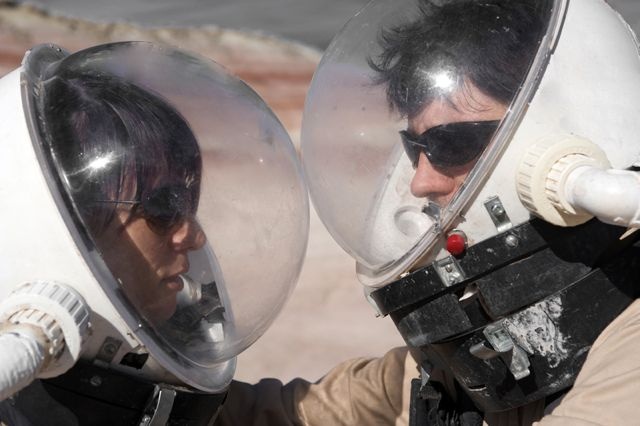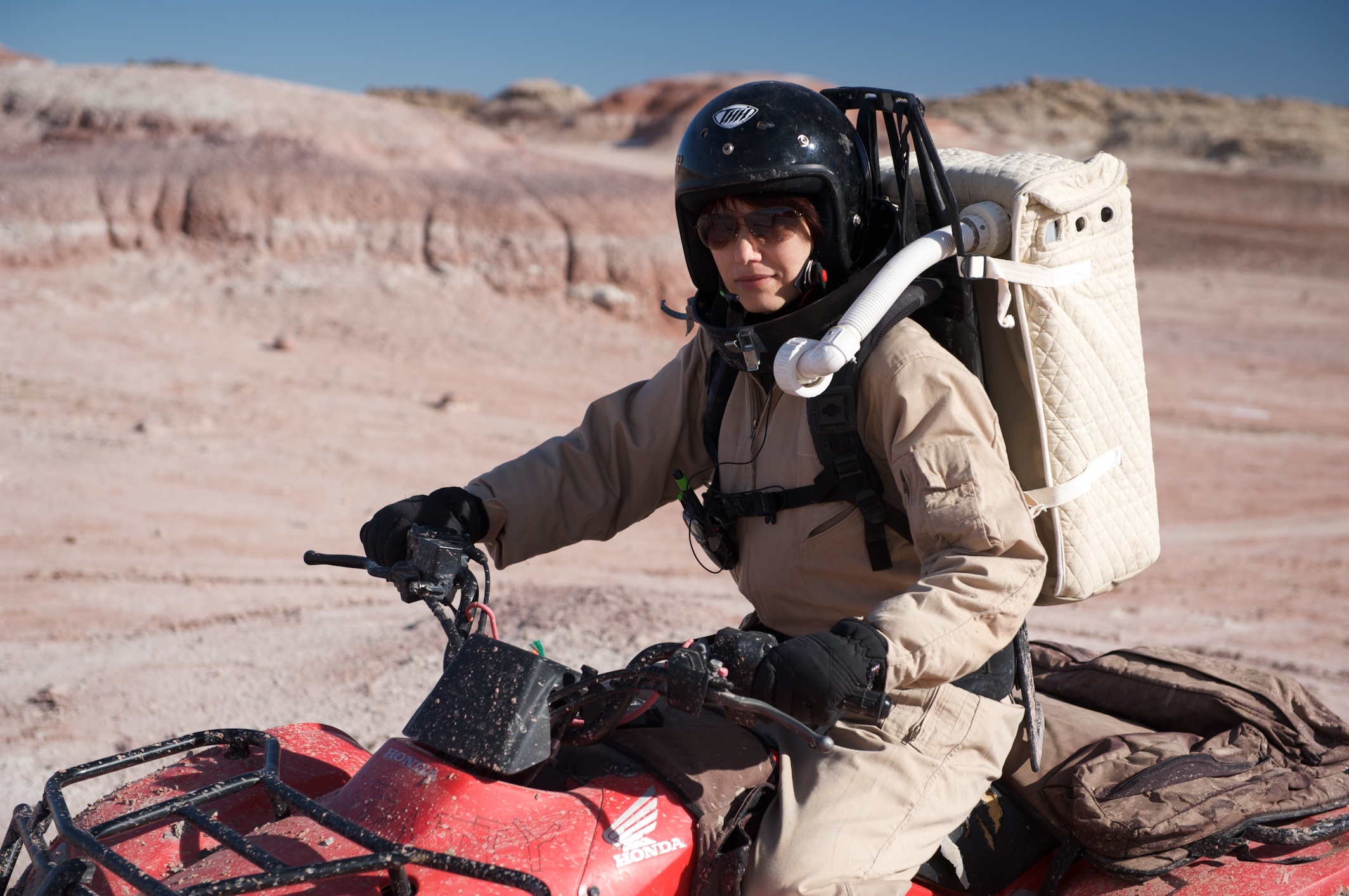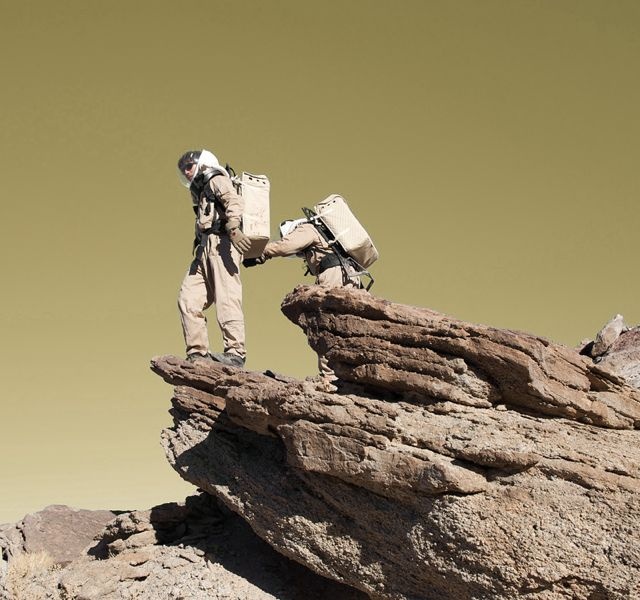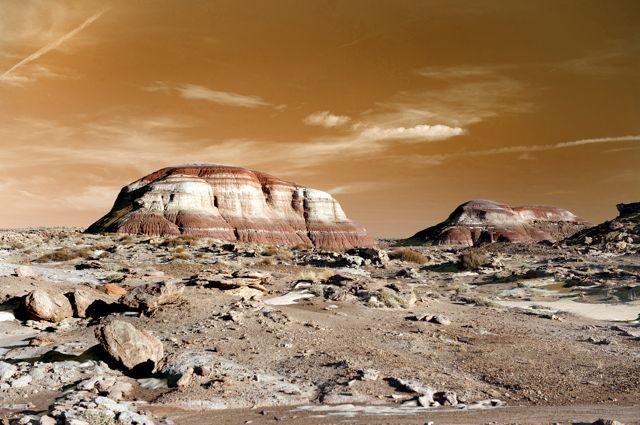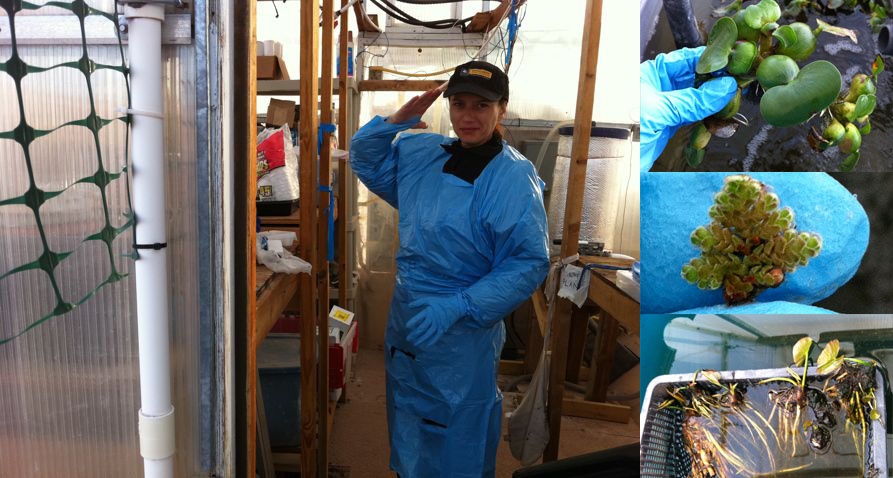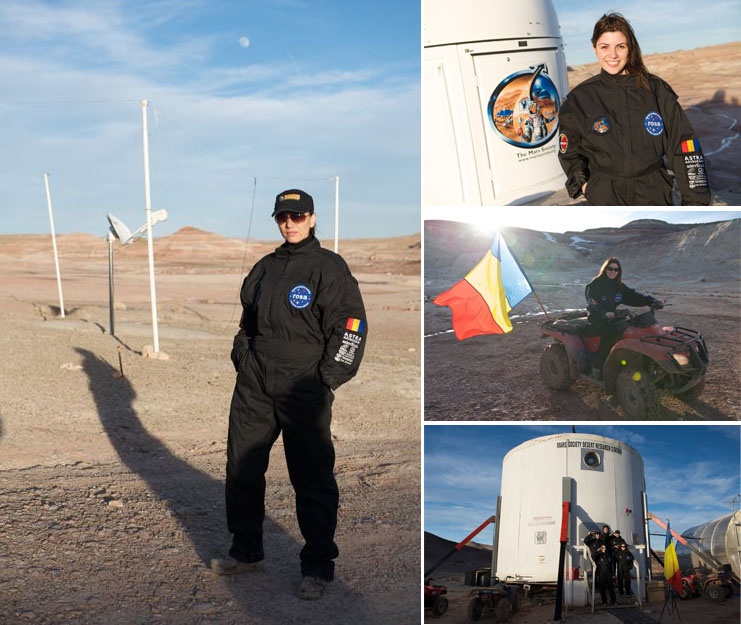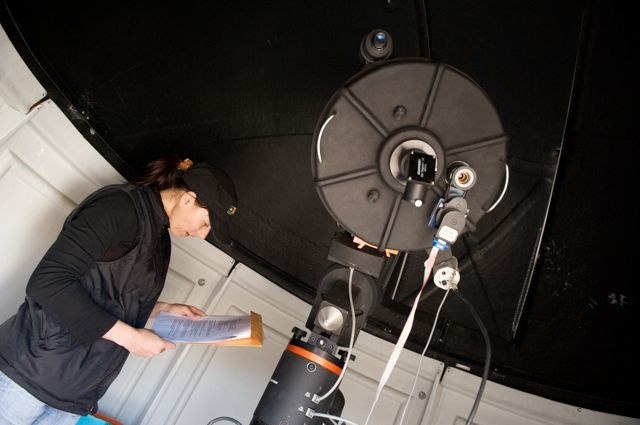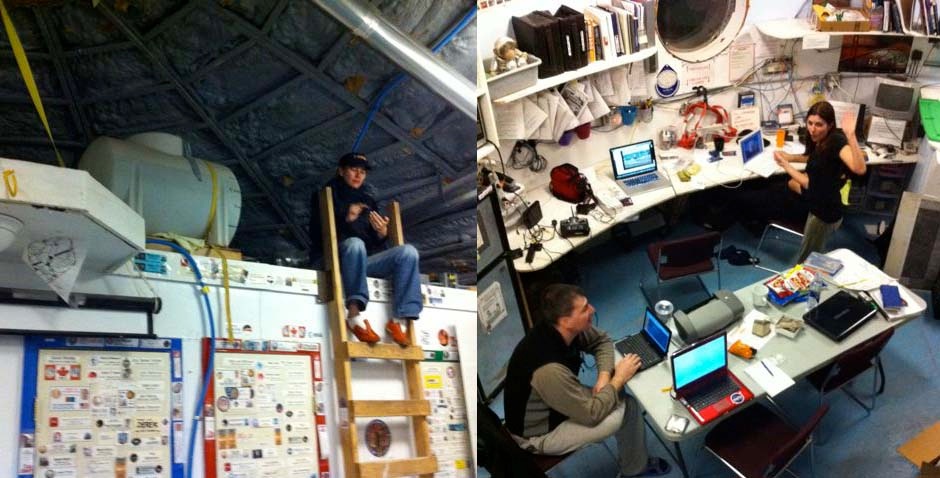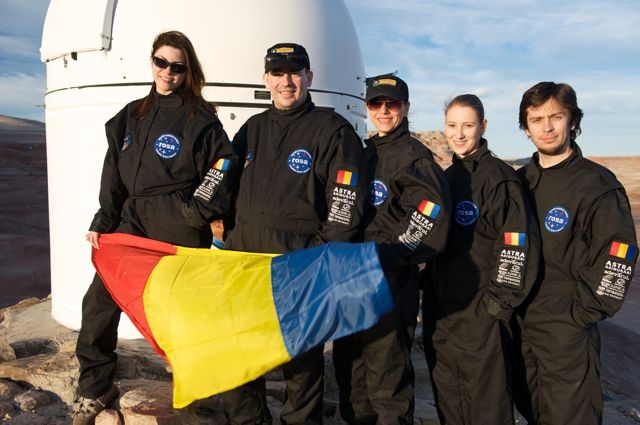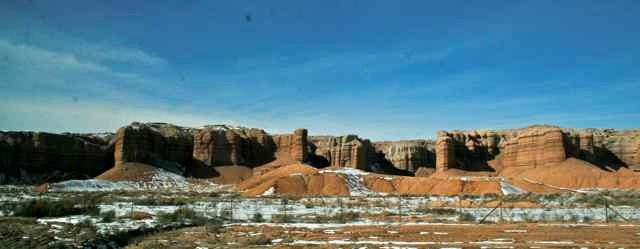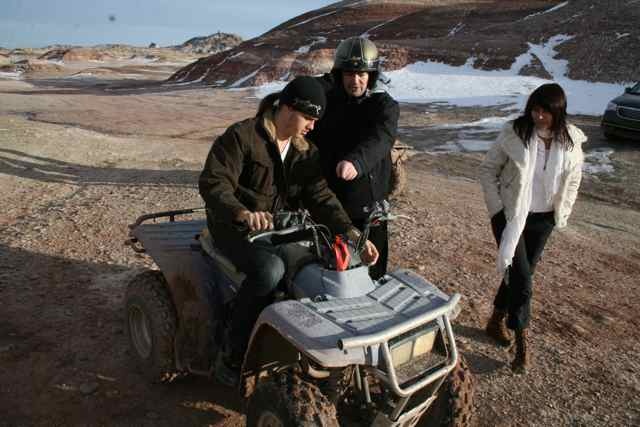Sundials use the shadow cast by the Sun to tell the time since ancient times and they did a great job. The shadow of the Sun was also used by the ancient Greek thousands of years ago to determine Earth's circumference. All over Earth, people built sanctuaries and places where the shadow of the Sun at different times of the day tell us no only the time but also the history of time on Earth. Starting with a stick in the ground and finishing with very complicated structures, where the Sun at noon spreads its light on a golden plate that marks the beginning of the year, we all used the Sun, all over the globe to tell the time. It's our best tool.
Even the Mars exploration Rovers are carrying the first sundial made for Mars ahead of man's arrival. Since I am trying to teach my team how to navigate without instruments constructing a Sundial is the logical first step to start. One Martian day is called Sol, since the Viking lander days in 1970's and it's 24 (Earth) hours, 39 minutes and 35,2 seconds long. It's longer than the normal day on Earth. Our Sundial will not tell us the time on a 24 hour basis, more like from 8-5 and this is why we decided to nick name it the "8-5 + 1 hr lunch break" dial, to remind us of the fact that home, on Earth, most of the people have a 9-5 job. It's real name is "Sarmisegetuza", our ancient capital of Dacia where our ancestors had an astronomical sanctuary, measuring the time and predicting the eclipses using the Saros cycle.
The reason we can only have it from 8-5 is position. At 5 PM the shadow cast by the hills nearby is ending all our fun.
We can see our dial from the kitchen's window and if the generators would stop working we could send someone from time to time to stand there for as long as the food will have to broth so it's coming in quite handy.
Building our Sundial in few easy steps
We started by deciding where about will it go. "Erlay in the Morning" we went up to decide where it should be:
It's been a while since I wrote about life on Mars. That is because we were so busy adapting to our new environment! It's really not easy and we have to fill in for the crew's engineer, thank God there are two of us to do that job.
Here are the two engineers of the mission, myself and Dragos Bratasanu who is also the journalist.
How does a day on Mars look like:
Waking up to another beautiful day on Mars is waking up with an exotic landscape. Looking on the wIt's very Martian! Because we are on a very tight recycling schedule, we brush our teeth with baking soda and we are only washing our hands with Oasis biodegradable soap. This gets transformed into gray water that is recycled through the green house.
How do astronauts eat?
We are subjected to a food study. We eat alternatively and have days for dried food that comes in huge cans and days for cooking when all we do is to rehydrate dried ingredients and then cook normally. So far we made bread, polenta, and a sort of naan bread.It's a very interesting experience that stretched all our talents to the maximum, including creativity whilst cooking.
Here is what we received from Mission Support:
From ancient Polynesian voyagers to present-day South Pole overwinter crews, lengthy sea voyages and polar exploration missions have all required specialized foods to sustain the crew over long periods of time in places with limited or no access to food in the local environment. Space missions continue this practice in a sense – present day astronauts consume a specialized diet too. Since cooking is nearly impossible in microgravity (search online for Sandra Magnus to learn the details) astronauts eat prepackaged rehydratable or ready-to-consume foods for all their meals. These meals are convenient to prepare and eat in microgravity and hundreds of different foods have been prepared for this purpose by space agencies worldwide. However, humans eating a restricted diet over a period of months ultimately experience “menu fatigue”. They tire of eating even the foods they enjoy, and their overall food intake declines, putting them at risk for nutritional deficiency, loss of bone and muscle mass, and reduced physical capabilities.
On a planetary surface mission, the presence of gravity makes cooking possible. The shelf life of properly packaged food ingredients is typically longer than that of pre-formulated foods, and bulk packaged ingredients require less packaging mass and generate less packaging waste than individual rehydratable meals. Furthermore, anecdotal evidence indicates that menu fatigue is far less significant when food is cooked on site from stored ingredients. With some skill and creativity on the part of the cook, an almost infinite variety of foods can be produced and customized to the needs and liking of the diners. Furthermore, the preparation and consumption of food is a social interaction for the crew, a creative process for the cook, and an important part of every human culture. The major disadvantage of cooking on a space mission is the requirement for crew labor and water for food preparation and cleanup. Crew time is very valuable, and the more time spent on housekeeping, maintenance, and food related tasks, the less is available for the mission’s exploratory or scientific goals. The labor requirement per crewmember meal varies with the size of the crew, the number of foods prepared and the equipment and ingredients available, but very little is known about the break-even point in crew size, at which cooking would become more labor-efficient than eating instant foods out of individual packages.
The MDRS food study is designed to simulate the food system on a real planetary mission and to compare the two types of food system – crew-cooked and pre-prepared – as thoroughly as possible in the context of a two week mission. The food acceptability, health and mood data you enter into your questionnaires, your skill and creativity as a cook, and your comments and suggestions to the food study investigators (who also have a NASA grant to study related issues) will have a real impact on the future of eating in space.
We are doing alright after one week of eating, the food is great but I do miss fresh stuff like apples or oranges or at least a leaf of lettuce. There are a lot of colours here on our Mars but green, the colour that defines life so much. I miss green and I dream of a green Mars one day.
Daily reporting
Reports to be sent home
are written in the first part of the day, after breakfast. We are on different times and everything has to be in overnight.
Whilst I write this blog, its 1 PM here on Mars on Tuesday, the 25th of January, 3 PM at the Mission Control Center, 10 PM in Romania and 9 AM in tomorrow morning in Wellington.
Reporting to Mars Mission Control
are sent every night until 8PM. Mission Control is online from 8 PM till 10 PM to answer to our daily issues and check on us. The reports are
Commander Check In
Commander detailed report
Journalist report (this is the one that includes pics too)
Engineering report
Chef's Report
Biology Report
EVA (Extra Vehicular Activity) Report
You can find all daily reports here Daily Reports: http://www.mdrs2011.com/Crew98.htm on the top of the page there is the link to the daily reports. I am sure that you will find some of these insights very interesting.
EVA (Extra Vehicular Activities)
Almost every day some of the crew members go on EVAs for scientific or outreach purposes. EVA - extravehicular activities are real fun and for safety purposes we are wearing our normal helmets when we are driving the ATV's.
There are many procedures that are to be followed for an EVA that I will detail in one of my future posts.
The Martian sky is blue at dusk and dawn and orangy-creamy at noon.
On to Mars!
The previous crew left us waiving. We are home alone on Mars.
We started with a review of everything we had on the station, from paper and toner for the printer to the ridiculously good food (that we only rehydrate). You can find everything at MDRS, everything that makes life easy for the crew. Even movies. It is customary that everyone brings a movie or a book and leaves it here. I am the Executive Officer of the crew which means second in command, and I like it. The job comes with the room, myself and the commander have one wall to the exterior so we can vigil every movement of the crew (or of the wind).
We decide to start the simulation on Tuesday, which will give us time to get acquainted with what we must do here and do it safely. Safety of the crew comes above everything at MDRS.
Life in a Martian habitat is nothing like our daily 9-5. First thing after waking up, the crew's engineer makes the morning round, checks the engines, the power generator, heat and water, pumps and the greenhouse where the gray water is being recycled. We are only using Oasis soap which is a bio - soap that breaks down into non-harmful compounds. Although at first we were skeptic about it, it's one of the best soaps I have ever used.
The gray water is recycled inside the glasshouse with the help of bacteria and plants such as water hyacinth and duckweed. This water then goes into the toilet and from there inside the septic tank. Water is very scarce and we have to use as little as we have to for flushing down. Some of us are OK with that, some are not. It's not easy to live here and we are starting to fully feel it.
Engineering
I love engineering, I would have loved to do it for real, in a space station. Since our real engineer could not make it, we assigned the difficult task to myself and Dragos Bratasanu, who also is the journalist of the mission. This way we can deal with this and also have time to fulfill our daily tasks. Having to perform another person's job had a great impact on all of us but we are adapting. At the end of the day, this is about adaptation and teamwork.
Today we started by preparing the ATVs for a ride and training on them. Nobody drove these things before and we have to master this art if we want to get anywhere in the dessert. Next time we will be driving them will be with our space suits on. Once we enter the sim we will only be allowed to wear the space suits or walk through the pressurized tunnels that go to the Observatory and the Greenhouse.
We also went to town to get the last shipment of scientific materials and found Judah Epstein, the commander of the previous crew. We invited him to lunch and we talked about our projects, both for this mission and in our life. Judah is a passionate of space, and his CV as everyone else's who was in here is impressive.
Being green on Mars
Our crew decided to follow a recycling programme. There are not too many recycling facilities here in Hanksville unfortunately all rubbish goes to the landfill. We will come up with ideas on how to best reuse everything as we would have done on Mars too. For this we setup a whiteboard where we all write our thoughts as to possible uses of the waste. We will be weighing and measuring all our waste at the end of our stay here.
Gardener by day and astronomer by night
And this has to be the best job ever! Who would have thought I would be able to combine my love for biology and astronomy on Mars? It works very well. The telescope is a C14 and I am going through all its documents and checklists.
And at dawn and dusk I am neither gardener nor astronomer, I am an engineer. So the engineer in me is checking the water pump in the attic.
Below is Iulia (waving) and Commader Pop :) writing. Iulia is training to become Romania's first female astronaut. She will make an awesome astronaut, she is very knowledgeable, a great crew mate and very fun to be with. All these qualities are very important when you live in such confined environments.
Well it's time for me to go but not before sending you our crew's best regards.
Will be back again with another transmission
On to Mars!
We traveled from two sides of the world, westwards and eastwards to the "Launch Pad" in Grand Junction USA. There, we stayed overnight and the next morning left with a rental car to go to Hanksville, Utah.
Hanksville is a small town, to me in the middle of nowhere :), where hoards of tourists come in the summertime to look for dinosaurs bones. In the winter time everything is empty. Just the few locals and two gas stations. Everything else is closed excepting perhaps the local store.
However at the gas station they do sell the famous bones and obsidian/ agate arrows.
There is something that struck me since I stepped foot in the USA. It's big. Like really big.
The European units of measurement are too small here.
It all makes sense to have miles, gallons. It is a place everyone should see once in their life time and no amount of American movies will compensate for the real feeling. But they will contribute heavily to the deja vu sensation you have the moment you see the coast from the airplane. Another type of deja vu, the one that gives you the understanding. I understand now very many things about these people. Just by being here. Ah, and upon my return to New Zealand I will watch "the world's fastest indian" one more time and with different eyes.
DG
DG was waiting at the Hollow Mountain and he led the way to Mars.
Who was he? A question we were asking ourselves before we left as he is quoted in all the documents we read. He was the local support person so if there are any issues, he was our man. :)
Mars
"Mars" revealed itself a few miles down the road, where the reservation started. At the gates, the three men from crew 97 were waiting for us on the ATVs. Here is commander Judah Epstein saluting us.
Once we passed the gates an out of this world landscape came in the front of our eyes.
Not even the fact that we were on an Earth-made car alleviated the shock of seeing such alien world and I wish now I could go to Mars for real.
There is something about being the first explorers on a new world. It's the immensity of the horizon and the fact that you are on your own to survive and thrive. The most important law of life is the survival of the individual so that he or she ensures on a long term the survival of the species. It's this immensity of unknown that lays in the front of my eyes that gives me a feeling of exaltation, awe, and magnificence. I am so grateful that I had this chance to experiment this in my life-time! All these cliffs and mountains have embedded in them the ancient history of Earth, layers of sand and stones are altogether mixed in an amazing landscape. The colour red is everywhere and from what I saw on the pics taken from Mars, the landscapes are very similar, only the blue sky being a remnant of the fact that we are still on our Mother Earth. The wind is rolling the stones on the ground and and the sand is long gone to show us what once was a seabed. There are tiny plants that have established themselves in this dessert. Later I discover cacti, plants with very small (not even one centimetre) oval leaves that we call "lanata" - their leaves look like they are covered in wool. They do this so that the water will not evaporate. One plant that caught my eyes looks like an algae with deposits of water inside like a tuber inside out. All I can hope is that I will see them one day on Mars!
We arrive at the hab where the entire crew is very happy to see us.
They invited us to lunch and we gladly accepted. Lunch is made of dried food and you add water on the top of it. Wow, our first lunch on Mars was very tasty!
For the duration of our stay here we will be submitted to an experiment related to food, an I will talk about this and many other things in my next blogs.
For the moment we are concentrating on training, it is part of the procedure that we get instructed as well by the previous crew and they are doing a great job! Before I left home I used to watch them on the life feed cameras and now here they are talking to us in person.
A lot of things can go wrong and they are. The job with most responsibilities other than the commander's is the crew's engineer who must keep all the systems working. There are 4 ATV's which we must learn how to ride safely. You simply cannot go and get the samples on foot. The distances are too big.
We are told that the order is Safety, Sim, Science.
Our engineer could not make it and myself and Dragos will be it for the rotation. Here we are going to get the training at the systems of the station from Nathan Wong who really worked for NASA. I have to say this, it's too funny (for me) we are the B'Elana Torres and Jeordy Lafforge of the Mars Station.
Here is a picture of both crews.
At night I had to go out and take pics of the sky. The sky here is magnificent and I wish you all were here!
On to Mars!
Haritina
Three men and three women, some with a great life experience, others at the beginning of their scientific career will try to discover the mystery of life on Mars. Six Romanian researchers participate for the first time in a Martian mission. But they are not on the Red Planet. They are at the Mars Desert Research Station in Utah USA, on the Colorado Plateau.
From left to right:
Commander Virgiliu Pop
The 36 years old Virgiliu Pop is in command of the mission. He is scientific researcher at the Romanian Space Agency in space law and space politics. Other than that, Virgiliu is organising space outreach activities. He is a law school graduate and has a Masters Degree in law and doctoral studies in Space Law. In 2007 he attended the International Space University in Beijing China.
VIrgiliu's expertise is seek often by the national and international mass - media and his name featured in the "New York Times", "Science et Vie", "BBC", "New Scientist", and at "Space.com"
First Officer Haritina Mogosanu
Haritina is the astronomer in charge with the Musk Observatory - where she will use a 14" Celestron Telescope, the horticultural engineer and the biosecurity officer of the mission. She works for MAF Biosecurity New Zealand and wishes to find out what are the biosecurity risks if human habitats would be setup in the same time with the ecopoiesis taking place on Mars. She is 37 years old, holds a Masters Degree in Environmental Management and was part of the team that acclimatised the Kiwi plant (Actinidia spp.) in Romania. She is a very active astronomy and science communicator, planetarian with hundreds of hours of planetarium shows. She is currently the Publicity Officer for the Royal Astronomical Society of New Zealand and on the Executive Board of the Space Foundation New Zealand, chairing the Education Section.
Crew Engineer - Florin Mingireanu
Florin is scientific researcher at the Romanian Space Agency where he works in propulsion and the control of satellites altitude. He got his license in physics and astronomy in Louisiana, USA. His experience includes developing propulsion systems and guidance systems for rockets as well as testing those on high altitude balloons. At present he is involved in the research of hybrid fuel rocket engines. He is 27 years old.
*Crew Geologist - Iulia Jivanescu *
Iulia works as well for the Romanian Space Agency where she researches spatial applications - teledetection and GIS. In 2003 Iulia worked as research assistent at the Lamont Doherty Earth Observatory at Columbia University USA. She is licensed in geography, is working towards another degree in aerospace engineering and a PhD in selenography. In 2009 Iulia attended the international Space University at NASA Ames in California.
Crew Journalist - Dragos Bratasanu
Dragos is 26 years old and is a scientific researcher working for the Romanian Space Agency. He processes satellite imagery and their usage to monitor and prevent natural disasters. His activity was highly prised in competitions organised by the European Space Agency, European Union Satellite Center (EUSC), Joint Research Center (JRC), n 2009, i Digital Globe, n 2010. He holds a Masters Degree in Electronics and Telecommunications and now he is a PhD studet at the University of Siegen ZESS, Germania. Following his passion, photography Dragos reached beyond both arctic and antarctic circles. His photography can be found at www.dragosbratasanu.com.
Crew Biologist Beatrice "Betty" Gilea
The crew biologist is the youngest of the team. She is 25 years old and a Ph.D Student at the University of Bucharest, Biology section.
The Romars Mission is organised by the Romanian Space agency and supported by Astra Insurance, Nikon, Omnidata SA, Laboratoarele Bioclinica and Bucharest University.
Haritina Mogosanu
www.me.com/Haritina
A team of six Romanian researchers is taking part for the first time in a Martian Mission. They will not reach the Red Planet but a simulated habitat in Colorado. Simulation or not, the mission is not a game and the team will publish daily updates and status of their activity. Amongst them, Haritina Mogosanu is the Education Coordinator of the Space Foundation New Zealand as well as the Publicity Officer for the Royal Astronomical Society of New Zealand.
Romania is a country of space pioneers, from Conrad Haas - the inventor of the stage rocket to Herman Oberth - the father of the space era, to Traian Vuia - pioneer of the modern aviation and Henri Coanda - the inventor of the jet engine. Three decades ago, the romanians were sending Dumitru-Dorin Prunariu into space. Despite all these extraordinary facts, space exploration is still a mystery for many Romanians.
Romars Mission wishes to change this. Sending a 100 % Romanian crew at the Mars Desert Research Station (MDRS) is as close as we can currently get to send a Romanian crew on Mars. NASA did it, ESA (European Space Agency) did it - sending their astronauts and scientists to train on analogue environments - and so does the Romanian Space Agency - ROSA.
Romars crew is bringing a pleiades of skills to the mission. We are united in our wish to contribute to the exploration of Mars and the popularisation of space sciences. Other than outreach, the mission researches the feasibility of working and living in alien environments and we simulate this here at the Mars Analog Station in Utah, USA.
What is the Mars Desert Research Station
Located inside the Colorado Plateau MDRS is a simulated Martian habitat belonging to the Mars Society. www.marssociety.org.
The station is located in San Rafael Swell, Utah, USA.
The crews are on a two weeks rotation and behave like they are on the Red Planet. From the moment they arrive at MDRS the crews must wear astronauts space suits, (yes with space helmets) every time they undertake activities outside the habitat. Activities can stretch from collecting geological samples to simply warming up the "Martian" rovers (one of the crew's engineer's morning tasks) so that they can assess the feasibility and efficiency of work in this type of suits.
The habitat itself is a two story cylinder of approximately ten meters in diameter, hosting on one floor the crew's bunks and on the other floor the laboratories and the living area. Next to the "hab" is the "Green Hab", the hydroponics bay and the Musk Observatory, workplaces of the crew's horticultural engineer and astronomer.
Following in the Footsteps of NASA astronauts
Before us, at MDRS have trained for the next missions astronauts, researchers from NASA, NASA Academy and ESA (European Space Agency) as well as members of the Mars Society. We are crew 98 (link).
The desert around MRDS is very similar to the surface of Mars and the flora and fauna present here could be very similar to the possible microscopic life forms from Mars or to the life-forms we perhaps will use in the process of terraforming.
The research done at the MDRS should prove useful for the future exploration of Mars. This type of simulations have been made by NASA before the Apollo missions on the Moon.
Romars Crew was assembled so that we all have multiple competencies not only amongst ourselves but also individually, so that we are able to fulfill many roles. This type of behaviour - multitasking - is one of the selection criterion for astronauts. It is very expensive to send a person in space so you might as well send someone who is a Jack of All Trades and a Master of living in confined environments.
Our research
We are undertaking biological and geological research, sampling, geochemical and microbiological analysis. The mission has an astronomical research side as well due to the clear atmosphere in the desert (like on Mars) but also an agricultural side with the Green hab facility. The biosecurity of the mission is very important, to avoid the contamination of the martian environment with terrestrial organisms but also the other way around.
Mars Society is an international non-profit organisation created to engage the people with the exploration of space, to present to these the benefits of colonising Mars. Other than the Romanian Space Agency, the Romars Mission is supported by Astra Insurance, Nikon, Omnidata SA, the BIoclinica Laboratories, University of Bucharest but also by MAF Biosecurity New Zealand.
Who are the members of the crew
- The first Romanian crew on Mars is lead by Virgiliu Pop, principal researcher in law and space politics at the Romanian Space Agency.
- Haritina Mogosanu is the crew's horticultural engineer, astronomer and the biosecurity officer, she works for MAF Biosecurity New Zealand
- Beatrice Gilea is the biologist of the mission, she is researcher at the PhD student at Bucharest University, Biology Section
- Florin Mingireanu is the crew's engineer and works for the Romanian Space Agency. He is specialising in propulsion and satelites attitude control.
- Iulia Jivanescu is the mission's geologist and works for the Romanian Space Agency in the GIS applications stream.
- Dragos Bratasanu is the press officer and researcher at ROSA where he processes satellite images.
The mission will start in a few hours, keep close for daily updates.
You can also watch "The Martian Chronicles" on Carter Observatory's Facebook Page
Or follow me on Twitter @wojithe3rd
Clear skies,
Haritina


